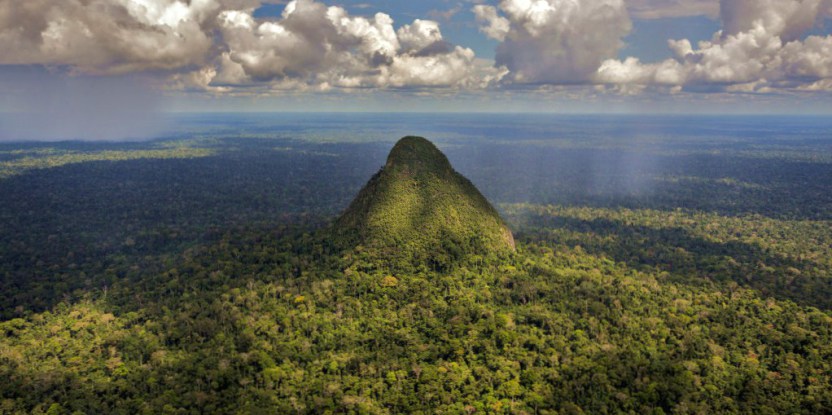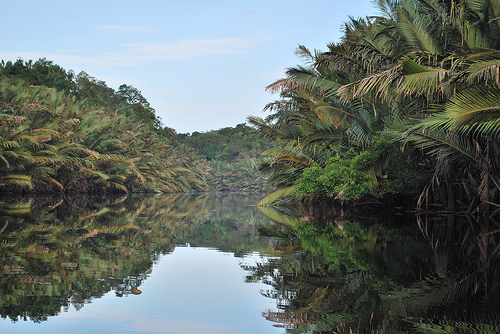
BOGOR, Indonesia—Peru has received international recognition for pushing ahead with programs to tackle climate change and deforestation, but those efforts have largely been ignored in the national media, a new report says.
The study of national and regional newspapers over a 10-year period found very few articles related to forests and climate change, with initiatives to reduce emissions from deforestation and degradation (known by the acronym REDD+) barely mentioned. Even in regional newspapers from the Amazon region, where several REDD+ initiatives are currently under way, reporting was either poor or non-existent, leaving much of the general public in the dark as to their progress.
The findings are “surprising,” said Mary Menton, formerly a research associate with the Center for International Forestry Research (CIFOR) and one of the authors of the report, particularly as Peru is piloting REDD+, a global scheme which would see forest-rich countries paid for the carbon stored in trees.
With reducing deforestation a key theme of last year’s UN climate change conference in Lima, the study highlights the challenge of building public awareness and encouraging debate on REDD+ in the media. It also underscores the need for scientists, civil society and policymakers to better communicate REDD+ decisions and progress to journalists.
“It shows that the information is not filtering out of REDD+ circles and reaching a broader public,” Menton said.
LOTS OF FOREST, FEW STORIES
Peru has the second-largest forest area in Latin America; up to 60 percent of its land area is covered in forests. But loss of tree cover has grown in Peru in recent years: The government reports deforestation of 120,000 hectares in 2010-2011; Global Forest Watch reported a spike in tree cover loss of 246,000 hectares in 2012. Deforestation accounts for nearly 40 percent of Peru’s total national emissions, according to the UN.
In response, the Peruvian government has committed to reduce emissions from deforestation and improve the sustainable management of resources. Peru has participated in numerous international initiatives that support developing a national REDD+ strategy and forest investment plans. By 2012, there were 41 sub-national REDD+ initiatives in Peru.
However, despite the country’s progress, national and local media have largely turned a blind eye, according to the study, which surveyed eight national newspapers based in Lima and five regional newspapers in San Martín and Madre de Dios, regions with the highest concentration of REDD+ initiatives.
The study found that between 2001 and 2011, 203 articles published in the national newspapers mentioned climate change and forests, while only 33 articles mentioned REDD+, avoided deforestation or reduction of emissions and deforestation. Most of these articles focused on international negotiations and did not address the challenges and implications of REDD+ in-depth. The majority of articles were by international agencies or journalists, with few written by Peruvian journalists.
Likewise, in the regional newspapers, only 10 articles mentioned forests and climate change, with 10 more referring to REDD+.
LAGGING BEHIND
The marginalization of REDD+ from mainstream news suggests that the national media still sees REDD+ as a predominately “environmental problem,” said Menton, with local and national papers focusing more on lifestyle or economic development issues.
“Mining conflicts, illegal logging activities or issues around access to water are likely to get more coverage than REDD+,” she added.
The few articles that did mention REDD+ focused mainly on issues around the rights of indigenous peoples, and the need for REDD+ to improve livelihoods and protect biodiversity. Both issues have been at the forefront of the REDD+ policy arena in Peru.
Mining conflicts, illegal logging activities or issues around access to water are likely to get more coverage than REDD+
The findings are striking when compared to other CIFOR research on REDD+ media coverage in other countries that followed the same methodology as part of the Global Comparative Study of REDD+. Studies in Brazil and Indonesia revealed that reporting was much higher, with 409 and 190 articles, respectively. Peru’s coverage of REDD+ was found to be similar to countries such as Cameroon with 14 articles and Vietnam with 18.
The study highlights the challenge in building the capacity of journalists to report on REDD+ and the need to ensure that information is accessible to wider audiences.
A recent CIFOR report also suggests that much more is needed at the political level to encourage national debate and inform the general public. This includes better engagement between REDD+ policymakers and economic and developmental actors seen as driving deforestation.
“Without the agricultural sector, businesses and other big players at the negotiating table, REDD+ runs the risk of seeming irrelevant,” Menton said. “It just won’t register with journalists.”
LOOKING AHEAD
Much has changed since 2011, Menton notes, with a growing number of journalists and organizations actively involved in providing training and workshops to enable the media to better cover environmental issues.
The study also points to a gradual increase in coverage of environmental issues, which is likely to continue after international attention focused on last year’s UN climate change summit.
“With the buzz surrounding the conference, we would expect to see more journalists engaging in the REDD+ debate, increasing both the quality and quantity of reporting,” she added.
“It would be great to do a before-and-after analysis to really gauge the impact of the [climate summit] but also track changes in the policy arena over time.”
Mary Menton is now director of policy and practice at SEED International. For more information about this research, please contact her at mary.menton@seedinternational.org.uk. For more information about CIFOR’s research on REDD+ in Latin America, contact Manuel Guariguata at m.guariguata@cgiar.org.
This study was conducted in partnership with Libélula Comunicación Ambiente y Desarrollo and is available in English and Spanish. CIFOR’s Global Comparative Study on REDD+ is supported in part by the CGIAR Research Program on Forests, Trees and Agroforestry and by NORAD, AusAID, DFID and the European Commission.
We want you to share Forests News content, which is licensed under Creative Commons Attribution-NonCommercial-ShareAlike 4.0 International (CC BY-NC-SA 4.0). This means you are free to redistribute our material for non-commercial purposes. All we ask is that you give Forests News appropriate credit and link to the original Forests News content, indicate if changes were made, and distribute your contributions under the same Creative Commons license. You must notify Forests News if you repost, reprint or reuse our materials by contacting forestsnews@cifor-icraf.org.

